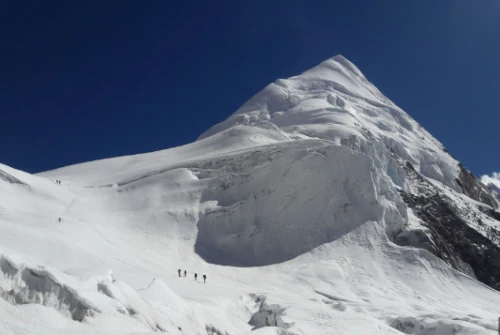Combining Lobuche Peak Climbing, Island Peak Climbing, and the Everest Base Camp trek via the Gokyo-Cho La Pass route offers a thrilling and diverse mountaineering experience in the Everest region. This itinerary combines the adventure of climbing two peaks, Lobuche and Island, with the classic Everest Base Camp trek. It allows you to experience the beauty of the Everest region, including the Gokyo Lakes, Cho La Pass, and the famous Everest Base Camp, while also providing the opportunity to test your mountaineering skills on two stunning peaks. Please note that climbing peaks requires technical skills and experience, so ensure you have proper training and guidance from experienced guides and Sherpas.
Why Combine Lobuche and Island Peak in One Trip?
Combining Lobuche East and Island Peak in a single expedition is both time-efficient and incredibly rewarding. By doing both peaks in one itinerary, you make the most of your acclimatization and climbing logistics. You’ll already be adapted to the altitude after reaching Everest Base Camp, giving you a higher chance of summit success.
Lobuche East offers a more technical ascent involving snow, rock, and ice climbing, while Island Peak adds glacier travel, ladder crossings, and a 100-meter headwall, perfect for developing well-rounded alpine skills. This combo gives adventurers a chance to test themselves in different terrains and techniques without needing two separate expeditions. Plus, the panoramic views from both summits of Everest, Lhotse, Ama Dablam, Makalu, and Pumori are truly unforgettable.
Who is this Climb Suitable For?
This adventure is best suited for trekkers who have already completed high-altitude treks like the Annapurna Circuit, EBC trek, or Kilimanjaro. It’s ideal for people looking to move into alpine climbing or prepare for future 7000m or 8000m expeditions. Climbers should be in good physical condition, able to walk 6–8 hours daily carrying a daypack at altitude, and handle temperatures below freezing.
Having prior experience with crampons, ropes, and high-altitude camping is highly beneficial. This expedition is not suited for absolute beginners or those with serious medical conditions unless guided by trained professionals and after extensive preparation.





 based on 1 review
based on 1 review